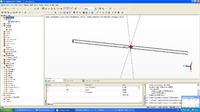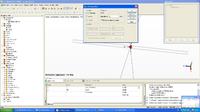gustavolsilvano2
Newbie level 4

Hello everybody.
I'm new in this forum and this's my first topic.
I'm from Brazil so excuse ne if I write something wrong.
So my problem is that I want to insert an AC-voltage source in a dipole antenna.
Searching in the web I found that the discret port is the best option. Is that right?
If it is than I have a question. I have to put the dicrete port passing from the middle of the dipole (orthogonal to the antenna) or coming from one to the other antenna (parallel to the antenna).
Another problem that I have is that I want to have the cst to plot the input impedance according to the frequency.
And the last problem is that I want to know the magnitude of the current so that I can calculete the input impedance (Zin=V/I) once that I know the voltage because I define it in the discrete port.
Thats all for now.
Thanks
I'm new in this forum and this's my first topic.
I'm from Brazil so excuse ne if I write something wrong.
So my problem is that I want to insert an AC-voltage source in a dipole antenna.
Searching in the web I found that the discret port is the best option. Is that right?
If it is than I have a question. I have to put the dicrete port passing from the middle of the dipole (orthogonal to the antenna) or coming from one to the other antenna (parallel to the antenna).
Another problem that I have is that I want to have the cst to plot the input impedance according to the frequency.
And the last problem is that I want to know the magnitude of the current so that I can calculete the input impedance (Zin=V/I) once that I know the voltage because I define it in the discrete port.
Thats all for now.
Thanks







